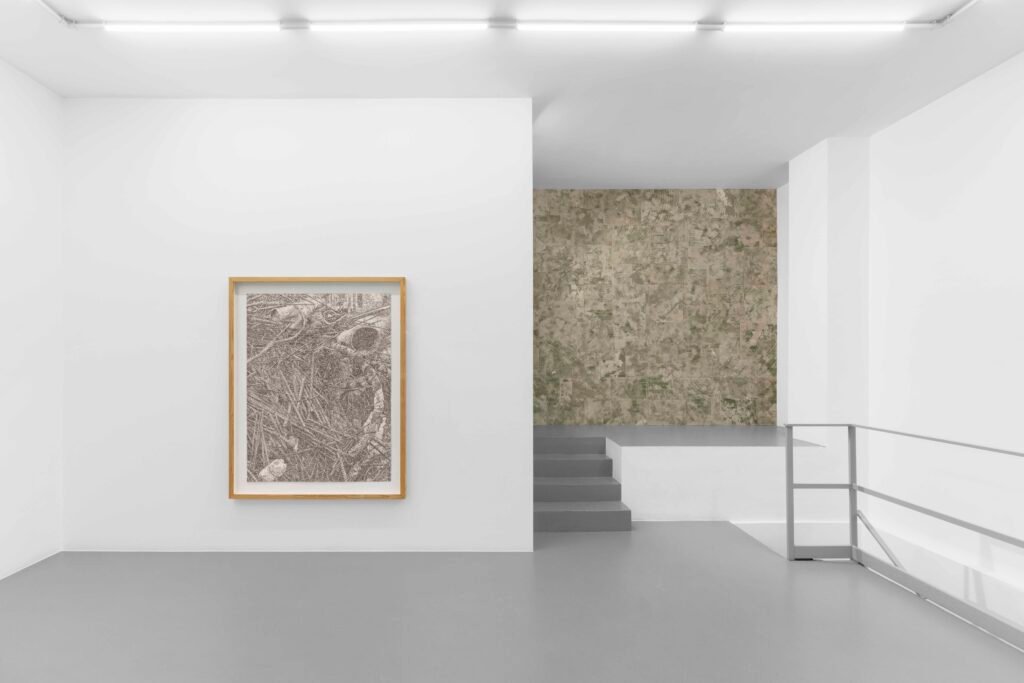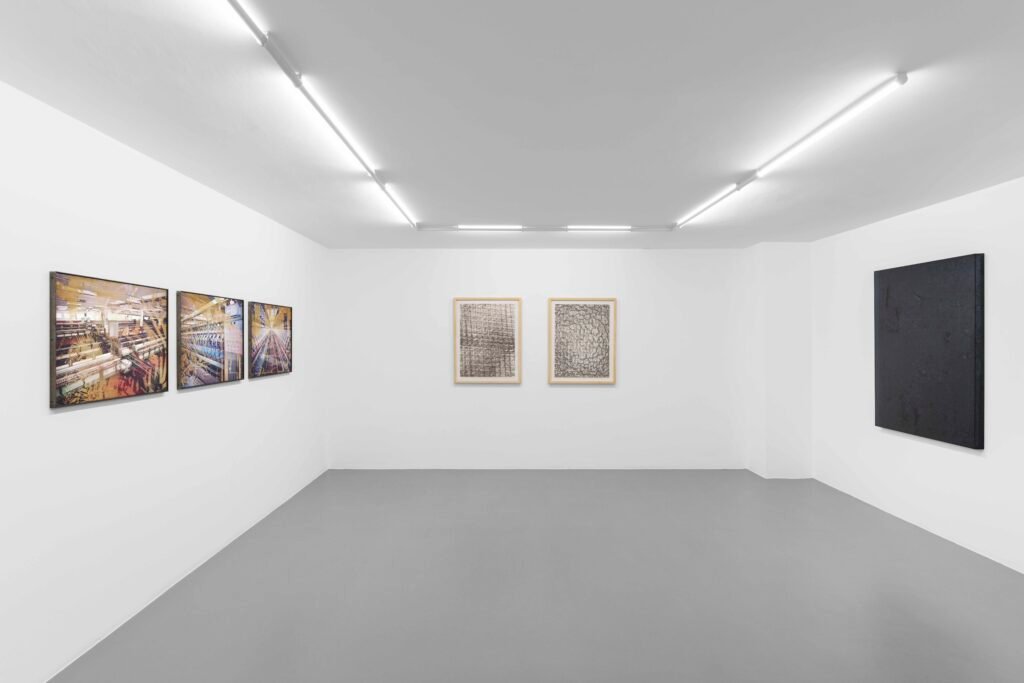Fragmenta
RIBOT is pleased to present Fragmenta, the first group exhibition hosted at the gallery. A project that includes Elisabeth Scherffig (Düsseldorf, 1949; lives and works in Milan), Felix Schramm (Hamburg, 1970; lives and works in Düsseldorf), Stefano Comensoli_Nicolò Colciago (Milan, 1990, Garbagnate Milanese, 1988; live and work in Milan); Simona Andrioletti (Bergamo, 1990; lives and works in Munich and Milan).
Fragmenta places in dialogue the works of a selected group of artists of different generations whose research is developed both around the idea of recovery and reworking in an operational and conceptual key of contemporary “finds” and abandoned scraps, and on the iconography of “detritus” and “rubble” understood as a symbol of precariousness, but also of transformation and metamorphosis. From this perspective, the theme of the “fragment” takes on primary value. This becomes a phenomenological element characterizing the works and at the same time an initial component from which to germinate a new and unprecedented unity. The additive process of sign or gesture—as well as of “materials”—is constant in each of the works on display and is a functional tool for the representation of an image poised between construction and destruction. The compositional act that is generated by the juxtaposition and reworking of pre-existing fragments or debris refers to a cyclical idea of time and memory, to a semantic and conceptual reactivation of matter and history.
Confronting the architecture and morphology of the exhibition space, where the large windows on the ground floor are subtle thresholds between inside and outside, the works exhibited in this first environment restore the atmosphere of a “construction site” (creative, cultural, social), a large choral workshop in ferment. Transitioning from the ground floor to the floor below, which is more intimate and characterized by an almost underground atmosphere, image, process, residue, and word thicken and layered in a more contained perimeter that proposes alternative techniques, processes, and languages with both private and militant gazes.
Elisabeth Scherffig’s large drawing Senza titolo (2006) is an emblematic work of her research. The artist interprets the city—with its construction sites and architectural spaces—as a living organism in perpetual transformation. Scenarios and cityscapes full of construction elements, scrap metal, debris, waste—organic and inorganic—are transfigured by the artist’s creative action. Elisabeth Scherffig—after photographic cues and notes—proceeds with dry, incisive, fragmentary, and dusty signs and gestures, the chalk becoming almost a scalpel with which to wound the surface of the paper. This practice—which might evoke a kind of sui generis “pointillism”—balances forms, images, and subjects. The work always seems poised between destruction and construction by freezing the becoming of human action and time. However, the still and frozen image opens up to synaesthesia and interaction: the noise and dust of the construction site, the smells and dangers of the debris emerge conceptually, the work invades the physical and perceptual space of the viewer. An indefatigable, curious, and sensitive flâneur, Elisabeth Scherffig has also investigated other elements and scenarios moving from an almost scientific and taxonomic analysis of various types of glass (shattered, tarnished, frosted, artistic, or industrial) to the exploration of quarries scattered around Europe with a rich inventory of rocks, small stones, and boulders. These subjects, too, are themselves natural or man-made fragments that can be observed and cataloged with an “analytical” spirit or “landscape” vein.
Felix Schramm’s work challenges the continuity of the exhibition space; the artist questions the limits of artistic genres and architecture. His works are sensory short circuits that are constituted through the accumulation and superimposition of layers, elements, and fragments. The large Multilayer (2019) exhibited on the ground floor is a work played on a very careful balance between solids and voids that is determined through a contradictory gesture, a gesture that by destroying creates. Schramm intervenes on the outermost layer of the work, the painted plasterboard, which camouflages itself with the wall of the gallery itself, breaking its continuity and bringing out the underlying layers still obtained through the superimposition of fragments of photographs taken of his own installations and characterized by bright and sometimes “acid” colors. It is a process of unveiling where through deconstruction new images are generated that refer to the idea of a form in continuous becoming and also take on a pictorial value. The work in the series Dark Site (2019), on the lower floor, investigates and further deepens the theme of recovery and reworking. This ashen-looking and iridescent work is generated by collecting dust and leftovers, more or less obvious traces of the artist’s own work processes. These personal “finds” are subsequently covered with silver leaf and held in plexiglass cases, celebrating the dynamics of research that evolves, builds, and regenerates each time.
Stefano Comensoli_Nicolò Colciago make the collection and reworking of elements found in urban or abandoned contexts their characteristic feature. They oppose the inexorable process of deterioration of matter, an act of care that gives back a new appearance and a new possibility of existence. For Fragmenta they propose a large intervention conceived specifically for the gallery spaces, which adapts to its perimeter. A work that belongs to the series Visioni di un oltre, started in 2019, but that in the last year has acquired a new environmental component, aimed at investigating and further questioning the relationship between work and space. Portions of linoleum flooring taken from a ruined building become the substance of the large installation created on the back wall of the exhibition space. The juxtaposition of cleaned and carved fragments, where what we see is the back of the linoleum tile, looks like a large mosaic or wall painting. The traces of glue and cement, originally necessary for the application of the floor, are a symptom of a reversal that alters perception, ennobles the gesture, and transports one space into another. Counterbalancing the monumentality of this project will be the unseen works in the series Fiori fuori posto (2024), compositions balanced between solids and voids determined by the action of a laser acting on deteriorated photographs found in an old disused factory. An almost sculptural “removal” process that reveals and follows the trace of a second photograph taken today in the same context by the artists. A material and conceptual process where the deterioration, the dissolving of the image is a researched act that takes on an aesthetic quality.
Simona Andrioletti’s multimedia research investigates and interprets social and cultural phenomena of the contemporary and recent past. Many of her works could be defined as “verbo-visual” for multiple aspects: the visual composition of images and words that structure the work, the use of musical pieces that sculpt space with sound, the collaboration with performers and singers during some of her projects. The cycle of her most recent works entitled Text me when you get home <3 (2023-2024) summarizes many aspects of her research. The artist, starting from the aesthetics and concept of fanzines—cheap and ecumenical independent publications—has produced a series of merino wool “blankets” where fragments of images from cultural history and art are juxtaposed with phrases related to social and sexual violence. The power of the subjects and messages contrasts, harmonizing, with the sense of warmth and softness of the “blanket-object.” The consistency of this cycle of works is also given by the type of production since the blankets are certified as mulesing-free and RWS by ICEA (Institute for Ethical and Environmental Certification). The works in the series Fix Me (2017-2024) are composed of actual puzzle pieces that aggregate into a final rectangle-in which, however, one tile is missing-and over which the words “Missing Everything” dominate. The apparent playful aspect of these works, with their pleasant chromatics, is charged with a profound, existential, veiledly tragic message: “a dissatisfaction, the feeling that we are missing something without knowing quite what.” The lapidary phrase “Missing Everything” is written with spray paint evoking gestures and concepts of urban graffiti art, born, in the genuineness of the original intentions, as a motion of protest and social urgency.





